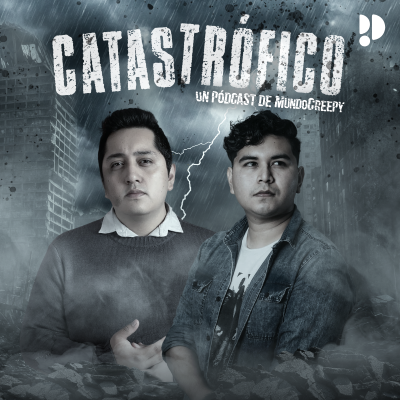
SOS AMS Podcast
English
Technology & science
3 months for 9 kr. Then 99 kr. / month. Cancel anytime.
About SOS AMS Podcast
The SOS AMS (Save Our Supply Antimicrobial Stewardship) podcast brings you brief evidence reviews on major infections that contribute significantly to antimicrobial use in clinical practice, all in under 30 minutes. We explore key topics like distinguishing infection from non-infectious mimickers, a microbiology and antibiotics primer, AECOPD, CAP, HAP, Cellulitis, UTIs, Intraabdominal infections, Sepsis NYD, and Bacteremia. Working through learning objectives, we review the pathophysiology of these conditions and best evidence in management, and apply principles learned to patient cases. Written by an ID AMS pharmacist, reviewed by ID AMS physicians, and co-hosted with an ER nurse, these podcasts bring a Canadian AMS perspective to commonly encountered infections.
All episodes
12 episodesApplied Cases: Bacteremia 2
This episode of the SOS AMS podcast is a continuation of the Bacteremia part 1 podcast. In this episode, our hosts apply the systematic approach to bacteremia discussed in the previous podcast to 3 patient cases. Relevant references [https://sites.google.com/view/sos-ams-podcast-home/references/episodes-10-12?authuser=3] can always be accessed at the provided hyperlink. The learning objectives for the podcast are: 1. Case 1: Viridans group Strep “bacteremia” 1 of 2 sets in a patient admitted with AECOPD 2. Case 2: E. coli bacteremia secondary to pyelonephritis 3. Case 3: Staph aureus bacteremia, unclear source Stock Media provided by raspberrysounds / Pond5
Bacteremia
In this episode of the SOS AMS podcast, Julia and Nicki take a closer look at the management of bacteremia. They discuss interpretation of blood culture results, including distinguishing between contaminant and true pathogen, the clinical utility of time to positivity, and the identification of high risk bacteremias. They discuss a systematic approach to managing patients with bacteremia, and evaluation for sources of infection. They then make specific mention of Staphylococcus aureus bacteremia and the four-pronged bundle of care for Staphylococcus aureus bacteremia as well as discussing the rationale for that bundle. Relevant references [https://sites.google.com/view/sos-ams-podcast-home/references/episodes-10-12?authuser=3] can be accessed at the provided hyperlink The learning objectives for this podcast are: 1. Review interpretation of blood culture results with respect to community vs hospital onset, time to positivity, discerning true pathogen from contaminant, and identifying highest risk pathogens. 2. Explain why identifying the source of bacteremia is critical to the management plan. 3. Review appropriate bundle of care for Staphylococcus aureus bacteremia. 4. Apply this knowledge to 3 patient cases (in Part 2 of this podcast: Applied Cases in Bacteremia) Stock Media provided by raspberrysounds / Pond5
Sepsis NYD
This episode of the SOS AMS podcast focuses on the ID/AMS side of sepsis and septic shock. Our hosts distinguish sepsis and septic shock from infection with systemic features, and bacteremia, both of which are commonly incorrectly referred to as sepsis in practice. They discuss an approach to identifying the source of sepsis in a patient with sepsis NYD, with emphasis on localizing symptoms, investigations, and what to do in the absence of localizing symptoms. They discuss the challenge in finding a balance between good stewardship and the use of aggressive antimicrobial therapy given the high mortality associated with sepsis. They then end the podcast by applying principles discussed to a case of nosocomial sepsis NYD. Relevant references [https://sites.google.com/view/sos-ams-podcast-home/references/episodes-10-12?authuser=3] can be accessed at the provided hyperlink. The learning objectives for the podcast are: 1. Distinguish between sepsis, septic shock, infection with systemic features, and bacteremia. 2. Describe the work-up of a patient with sepsis unclear source. 3. Discuss considerations for appropriate empiric therapy for a patient with sepsis NYD. 4. Apply this knowledge to a patient case Stock Media provided by raspberrysounds / Pond5
Intraabdominal Infections (IAI)
This episode of the SOS AMS podcast focuses on the pathophysiology, diagnosis, and management of various community-onset intraabdominal infections. Infections discussed include cholecystitis, cholangitis, diverticulitis, acute appendicitis, pancreatitis, and liver abscess. Our hosts end the podcast by applying principles discussed to a patient case, going from differential diagnosis to management. Check out the clinical decision-making matrix [https://sites.google.com/view/sos-ams-podcast-home/cdm-matrices/cdm-matrix-iai?authuser=3] for a summary of our top 3 differential diagnoses, as well as the relevant references [https://sites.google.com/view/sos-ams-podcast-home/references/episode-9?authuser=3] at the provided hyperlinks. The learning objectives for this podcast are as follows: 1. Contrast the pathophysiology of cholecystitis, cholangitis, diverticulitis, acute appendicitis, pancreatitis, and liver abscess. 2. List the usual pathogens implicated in community-onset intraabdominal infection. 3. Discuss selection of empiric therapy for community-onset intraabdominal infections. 4. Recognize the importance of source control in management of intraabdominal infections. 5. Apply knowledge of the above to a patient presenting with suspected intraabdominal infection. Stock Media provided by raspberrysounds / Pond5
Urinary Tract Infections (UTI)
This episode of the SOS AMS podcast focuses on the diagnosis, microbiology, and management of urinary tract infections, including cystitis, pyelonephritis, and catheter-associated UTIs. Our hosts also discuss the pressures in practice that lead to over-diagnosis of UTIs, a significant contributor to antibiotic resistance. They then end the podcast by applying the principles discussed to two patient cases, addressing common practice issues that arise when dealing with patients with suspected urinary tract infection. Relevant references [https://sites.google.com/view/sos-ams-podcast-home/references/episode-8?authuser=3] can be accessed at the provided hyperlink, and we would encourage taking a read through the excellent 3 page article written by Dr. Tom Finucane of Johns Hopkins. The learning objectives for this podcast are as follows: 1. Distinguish between asymptomatic bacteriuria (ASB), cystitis, pyelonephritis, and catheter associated UTI. 2. Discuss important considerations for optimal timing and interpretation of urine cultures. 3. Rationalize which pathogens are usually implicated in UTIs. 4. Discuss usual treatment and treatment duration for UTIs Stock Media provided by raspberrysounds / Pond5
Choose your subscription
Limited Offer
Premium
20 hours of audiobooks
Podcasts only on Podimo
All free podcasts
Cancel anytime
3 months for 9 kr.
Then 99 kr. / month
Premium Plus
Unlimited audiobooks
Podcasts only on Podimo
All free podcasts
Cancel anytime
Start 7 days free trial
Then 129 kr. / month
3 months for 9 kr. Then 99 kr. / month. Cancel anytime.























